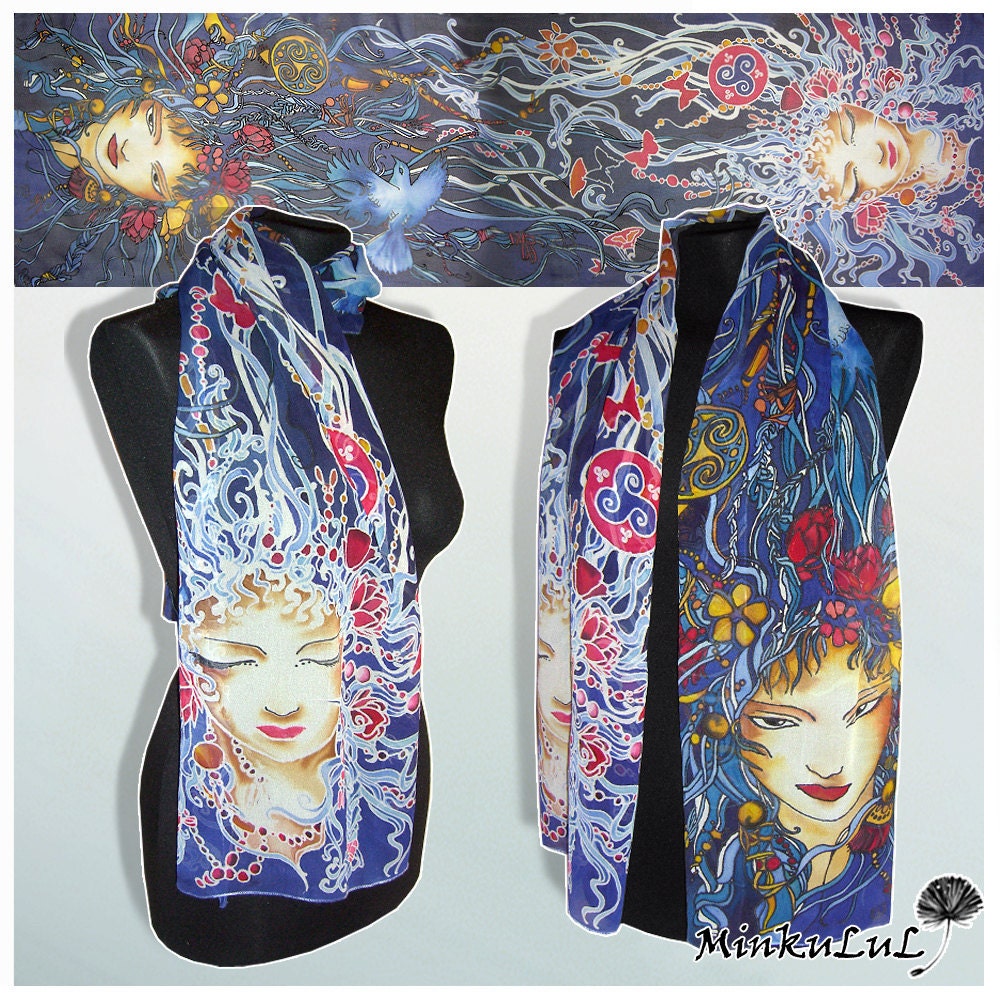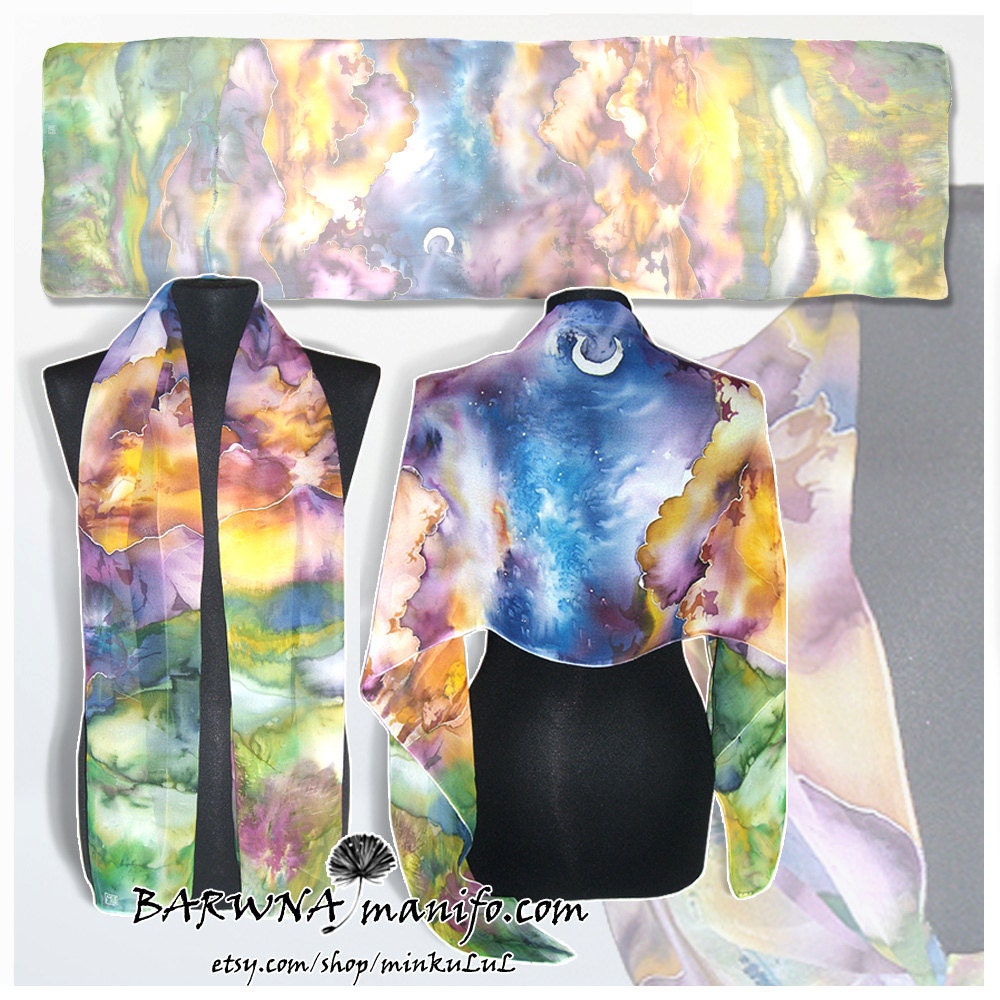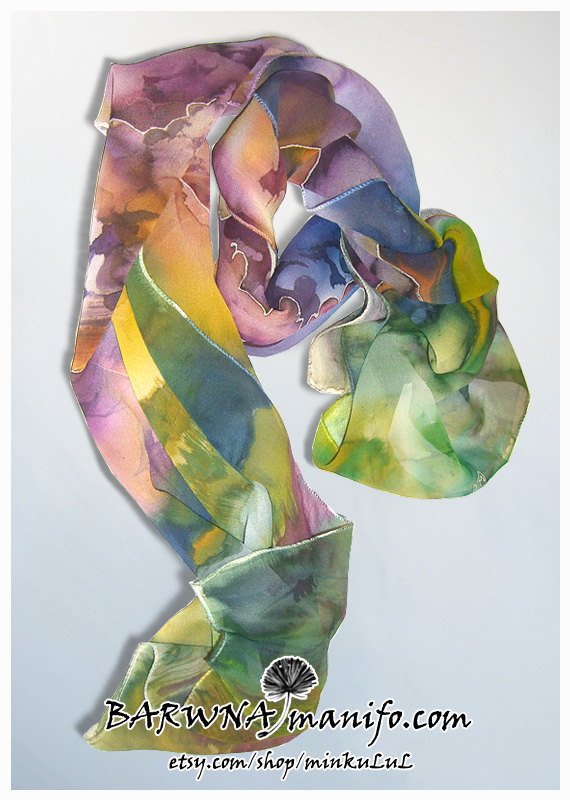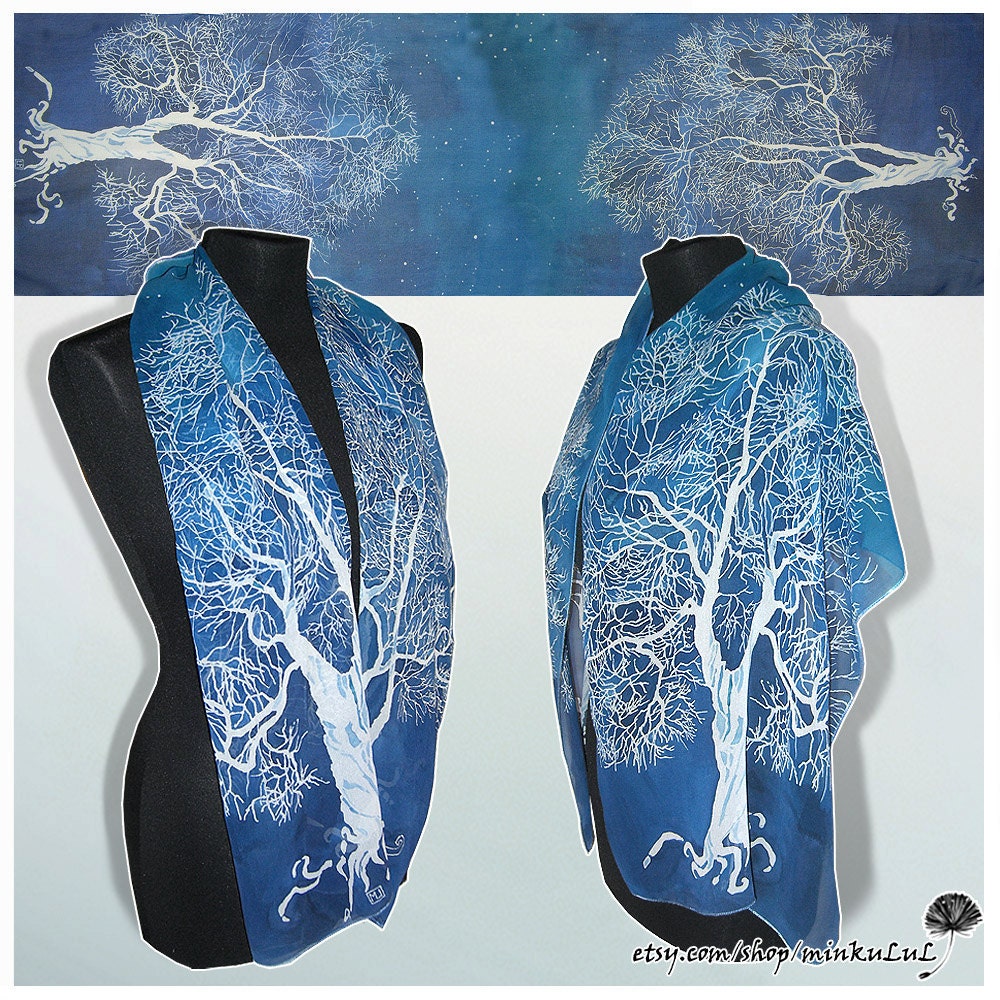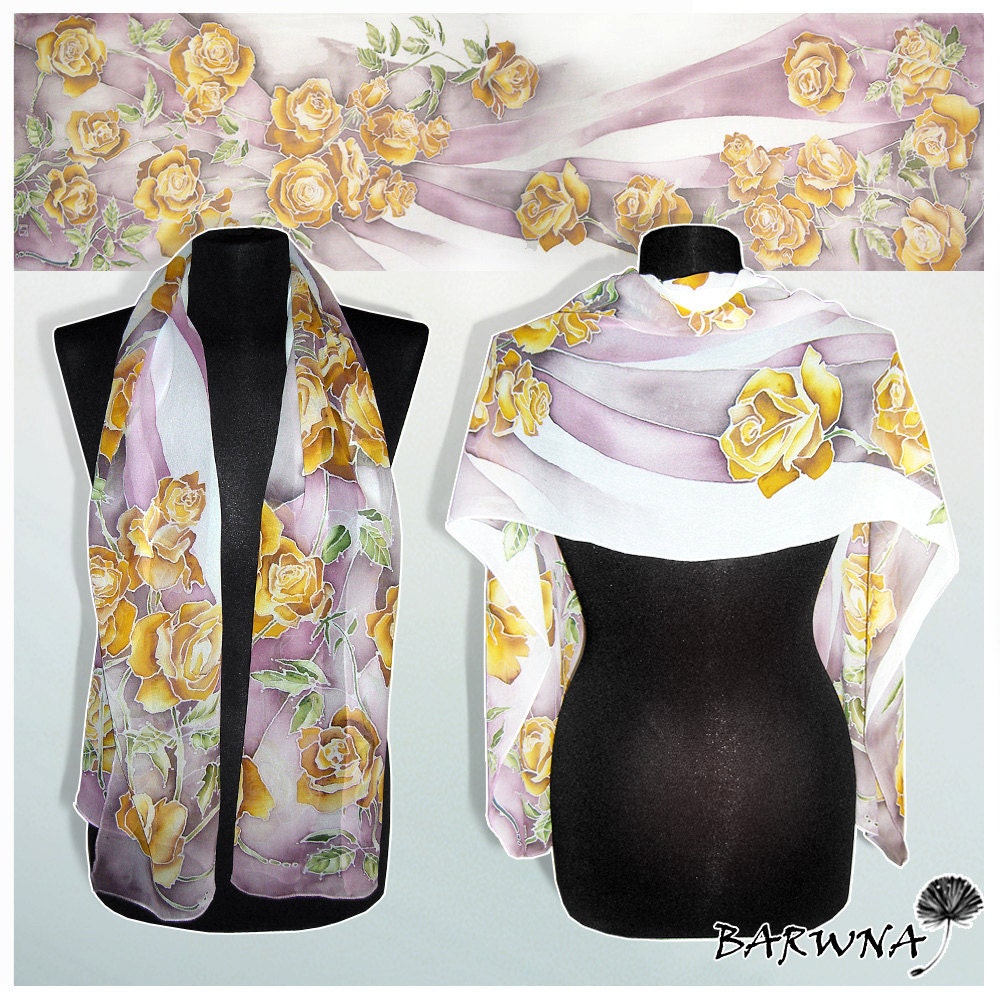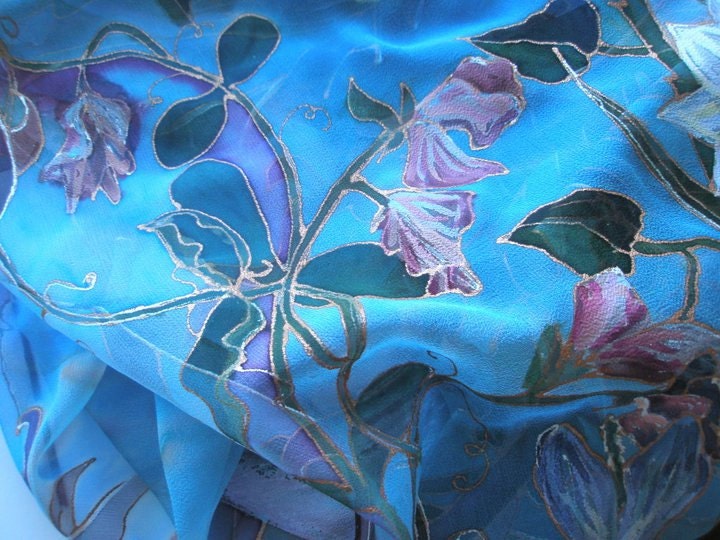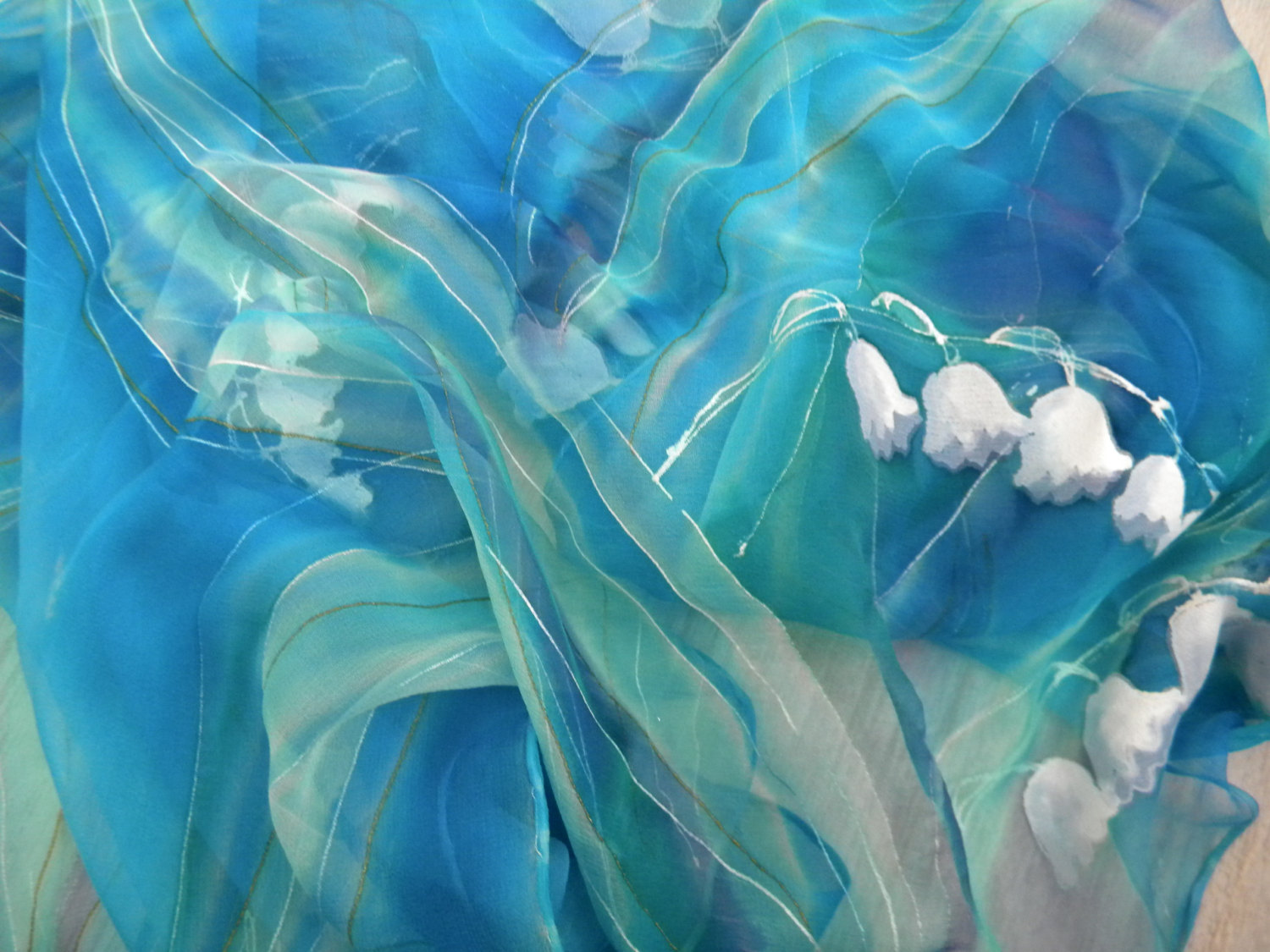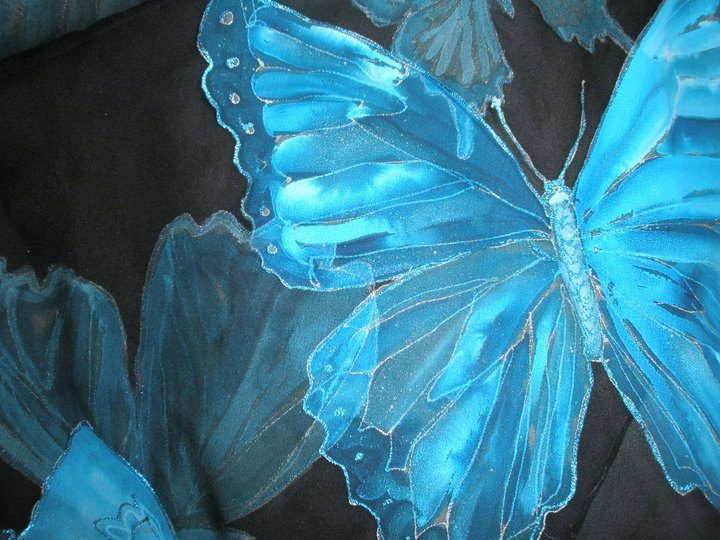Today I have the pleasure of introducing you to Maria Jürimäe. She is one of the leaders of our Silk Artist's Team on Etsy. It has been a pleasure getting to know her a bit over the past year or so and you are in for a treat with her story today.
About you:
I am an Estonian silk artist, I have painted
on silk and taught silk painting for over 16 years. I am member of SPIN
and one of the leaders of Silk Artists Team in Etsy.
I also work at the University of Tartu in the field of education.
I have two lovely daughters, 6 and 8 years old and sometimes they
participate in my silk painting or develop their own creations.
Why silk painting?
I have painted with watercolors as long as I remember myself - my father
is an artist, so painting was just a natural part of living. Watercolor
didn't have a bad smell (like oil paints had) and the transparency and
blends were enchanting. I also loved the thinking part - you had to plan
your work in advance to get the dreamed result.
I discovered silk painting as a student and fell in love with it
immediately - compared to watercolor it allowed even better blends, the
color of steam fixed dyes was just irresistible! And silk had a distinct
character – it was a living material and in the beginning it seemed to
me that I have just two options – to let silk to whatever she wants (and
just admire it and help the process by adding some dyes, water, salt,
etc.) or to try to do what I want and end up with disappointment.
Learning to accept silk and cooperate with it was really a rewarding
experience. And eventually I have learned to think “the silky way” and
am able to express even the most complex ideas on silk – not forcing my
will over it, but with cooperation this wonderful material.
What inspires your paintings?
The nature, the God, the Angels, the music. . .
I love to be the medium. Most of my scarves just “come to me” from
somewhere – I just have to let the brush to do its work, and sing my
songs. It is a wonderful feeling.
I also love to make made to order scarves – to use the ideas of
different people (even the craziest ideas can be expressed on silk) and
make them alive on silk. People, their stories and their problem they
would like to find solutions inspire me. Most of my clients have told me
that the result is even better than they have imagined, so I have
become quite confident in it ; )
What is your favorite silk painting you have painted?
It is almost impossible to pick one favorite. But because it is
spring I will choose one of my signature scarves: Lily of the Valley.
Your favorite type of silk, dyes, resist, etc.
I love silk dyes fixed by steam.
I have mixed the dyes by myself and used Pebeo, Marabu, Schjering. I
just love those bright colors! Nothing can be compared to steam fixed
silk dyes. My favourite guttas are from Marabu – they work well and
don’t add extra texture to silk.
I love the softness and tender touch of silk. This material is perfect
for feeling. . . so my favourite types of silk are crepe satin and
ponge. I hesitated a long time before opening an Internet shop – because
photos are just 2D images of my soft, shiny, living scarves. . . but it
seems that the magic of silk can be somehow captured even via photos.
I have also loved to learn very thin and transparent chiffon silk – it
is hard to paint because it is so transparent, but it gives a really
rich and elegant result especially in evening wear.
I order most of my scarves, dyes, and guttas from Estonian resellers Vunder and Scanimpex.
Please share a tip for other silk artists or those interested in silk art
If I have to pick up one tip, it might be – cooperation with silk. I
almost never pre-plan my silks in detail by drawing a 1:1 size paper
with the design. I begin to play with colors on silk and adjust my
design ideas according to results. This way every scarf or tie will be
one-of-the kind (I have painted for over 1000 scarves) and the energy of
scarf will be free-flowing, not forced.
If something goes “wrong” it actually is a sign to continue the work in
(a bit) different direction – learning to read those signs takes some
time, but it is surely worth of learning.
OK, this is more philosophy as tip. So something more practical too: to
avoid the back-flow from pre-hemmed edges I suggest firstly to paint the
right side of silk with quite dry brush (especially the edges – when
the brush is wet the silk absorbs it and later it results with
back-flow) and when the silk is ready, to add just very little paint
with large, but dry brush to those areas of back side that have remained
white.
And using a large, sharp ended watercolor brush (not too wet!) is helpful by filling tiny areas too ; ))
You can fine Maria here:

